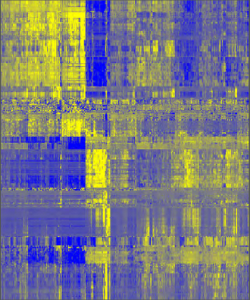Versions Compared
Key
- This line was added.
- This line was removed.
- Formatting was changed.
Summary
| Section | ||||||||||||||
|---|---|---|---|---|---|---|---|---|---|---|---|---|---|---|
|
Data Access
Citations & Data Usage Policy
This collection is freely available to browse, download, and use for commercial, scientific and educational purposes as outlined in the Creative Commons Attribution 3.0 Unported License. See TCIA's Data Usage Policies and Restrictions for additional details. Questions may be directed to help@cancerimagingarchive.net.
Please be sure to include the following citations in your work if you use this data set:
CT Colonography Citation
IconThe Cancer Imaging Archive Team. Data From CT_Colonography. doi:10.7937/K9/TCIA.2015.NWTESAY1
TCIA Citation
IconClark K, Vendt B, Smith K, Freymann J, Kirby J, Koppel P, Moore S, Phillips S, Maffitt D, Pringle M, Tarbox L, Prior F. The Cancer Imaging Archive (TCIA): Maintaining and Operating a Public Information Repository, Journal of Digital Imaging, Volume 26, Number 6, December, 2013, pp 1045-1057. (paper)
Other Publications Using This Data
- NEJM publication for their published results (N Engl J Med. 2008 Sep 18;359(12):1207-17)
See the CT Colonography section on our Publications page for other work leveraging this collection. If you have apublication you'd like to add please contact the TCIA Helpdesk.
Data Access
Imaging Data
| Info |
|---|
You can view and download these images on The Cancer Imaging Archive by clicking |
Collection Statistics | (updated 7/2/2014) |
|---|---|
Modalities | CT |
Number of Patients | 422 |
Number of Studies | 422 |
Number of Series | 422 |
Number of Images | 51,195 |
| Images Size (GB) | 25 |
If you are unsure how to download this Collection please view our quick guide on Searching by Collection or refer to our The Cancer Imaging Archive User's Guide for more detailed instructions on using the site.
Shared Lists
- Decoding tumour phenotype by noninvasive imaging using a quantitative radiomics approach
Clinical Data
Corresponding clinical data can be found here: Lung1.clinical.csv.
Please note that survival time is measured in days from start of treatment. DICOM patients names are identical in TCIA and clinical data file.
Restricted from Commercial Use
The data are not permitted for commercial applications. Please contact the associated data submitters with any questions about utilizing this data.
